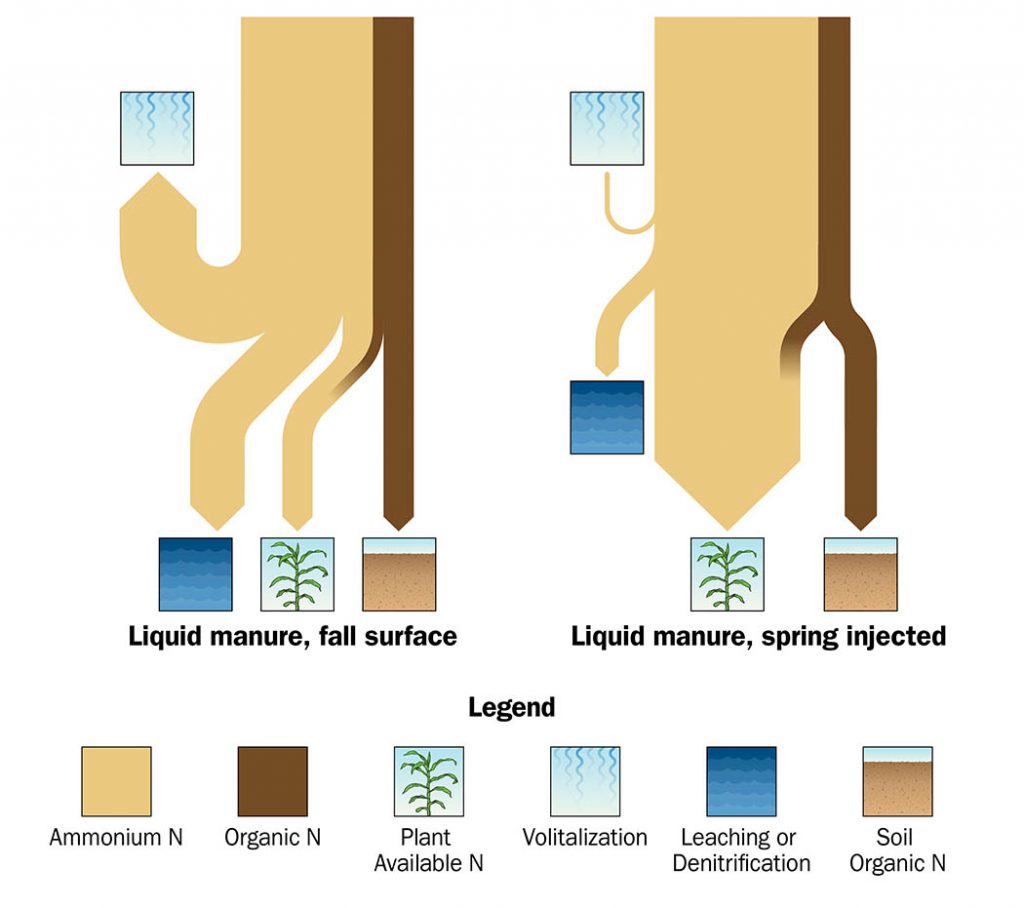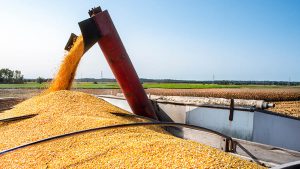Cropside: N credits from manure
AGRONOMIC INFORMATION FROM ONTARIO'S CROP SPECIALISTS

HOW MUCH NITROGEN (N) will be available next spring, from manure applied after harvest will depend on a number of factors. Factors range from manure and soil characteristics in the field to weather conditions – precipitation and temperatues – from time of application to early growing season. These are illustrated in Figure 1 and impact both nitrogen loss and plant available nitrogen at the time when crop nitrogen needs are highest.
The goal with liquid manure, is to have at least 50 per cent of the total nitrogen contribute to next summer’s corn crop. For solid manure the plant available nitrogen contribution will be less, but higher from fall application than the same manure applied in the spring.

Manure contains two significant forms of nitrogen; ammonium and organic nitrogen. For liquid manure that ammonium portion represents 50 to 90 per cent of the total nitrogen while for solid manure the ammonium portion is less than 25 per cent of the total nitrogen. The ammonium fraction is easily lost to volatilization. How much is volatilized depends on application timing timing and incorporation. Organic nitrogen is the slow release fraction with nitrogen release occurring for several years after application. Figure 2 illustrates the impact of ammonium vs organic nitrogen on plant available nitrogen for subsequent crops.
Plants can utilize either ammonium or nitrate. When liquid manure is applied and incorporated soon after wheat harvest the ammonium portion is ready for plants to utilize. In good growing conditions, that ammonium portion is quickly converted to nitrate. However, ammonium is tied tightly to soil while nitrate will move with water. For manure applied after wheat harvest, this means that the nitrate can move (leach) below the root zone, often with water that moves off the field through drainage tile. If manure is applied with a cover crop then more of the water and nutrients move up toward the root zone, therefore being held in the biomass and reducing the nitrate moving below the rootzone.

When manure is applied later in the season – when the soil temperature gets below 10° C – the conversion of the ammonium to nitrate is slower, resulting in less conversion and potential movement of nitrate during the non-growing season.
There are other factors that make predicting nitrogen availability difficult; such as the number of mild periods during winter, and how quickly the soil warms in spring. Weather influences microbial activity which, combined with soil organic matter levels, will play a role in timing of nitrogen availability.
Whether using liquid or solid manure, digestate, compost or biosolids products, the first step in predicting the nitrogen contribution toward the subsequent crop is knowing the nutrient composition of the material being applied. A manure analysis (including macro nutrients, C:N ratio and pH) will provide a basis for determining potential nitrogen contributions. Best estimates of all available nutrients based on analysis, timing, and incorporation details can be determined using the AgriSuite Organic Amendment Calculator www.ontario.ca/agrisuite. •












